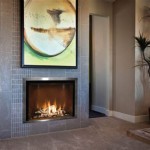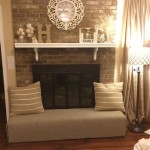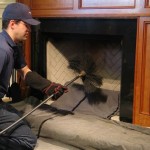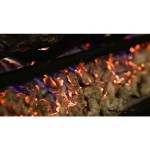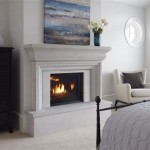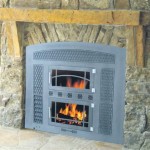Fireplace Stones Decorative: Enhancing Aesthetics and Functionality
Fireplaces have long been a focal point in homes, providing warmth, ambiance, and a sense of comfort. The aesthetic appeal of a fireplace is significantly enhanced by the choice of surrounding materials. Decorative stones, in particular, offer a versatile and visually striking option. These stones can transform a standard fireplace into a stunning architectural feature, reflecting personal style and contributing to the overall décor of a room. The selection of fireplace stones involves careful consideration of various factors, including stone type, color, texture, installation techniques, and maintenance requirements.
Decorative fireplace stones are not solely about aesthetics; they also serve functional purposes. They provide a non-combustible barrier around the firebox, protecting surrounding materials from heat and reducing the risk of fire hazards. The thermal mass of certain stone types can also contribute to the efficiency of the fireplace, retaining heat and releasing it slowly after the fire has died down. Selecting the appropriate stone requires an understanding of the material's properties and its suitability for the intended application.
Choosing the Right Type of Fireplace Stone
The market offers a diverse array of decorative stones suitable for fireplaces, each possessing unique characteristics and visual appeal. Natural stone, manufactured stone veneer, and cultured stone are among the most popular choices. Natural stone, quarried directly from the earth, offers unparalleled beauty and variation in color and texture. Granite, marble, slate, limestone, and fieldstone are common examples. Manufactured stone veneer, also known as artificial stone, is a lighter-weight alternative made from concrete or other materials, molded to resemble natural stone. Cultured stone is similar to manufactured stone veneer but is often produced with a more refined and consistent appearance.
Granite is a durable and heat-resistant option, known for its strength and resistance to scratching and staining. Its crystalline structure provides a variety of colors and patterns, making it a versatile choice for both traditional and contemporary fireplace designs. Marble, renowned for its elegance and veining, is a softer stone than granite and may require more maintenance to prevent staining. Slate is a fine-grained metamorphic rock with a distinctive layered appearance. Its natural cleft surface provides a rustic and textured look, ideal for creating a cozy and inviting fireplace surround.
Limestone is a sedimentary rock composed primarily of calcium carbonate. Its subtle color variations and smooth texture make it a popular choice for traditional and contemporary designs. Fieldstone, typically sourced from local fields and riverbeds, offers a rustic and natural appearance. Its irregular shapes and sizes create a unique and organic look, adding character and charm to any fireplace.
Manufactured stone veneer offers several advantages over natural stone, including lower cost, lighter weight, and easier installation. It is available in a wide range of colors, textures, and styles, mimicking the appearance of natural stone at a fraction of the price. This makes it an attractive option for homeowners seeking a budget-friendly alternative without sacrificing aesthetics. However, it is important to select a high-quality manufactured stone veneer that is durable and resistant to fading and cracking.
Design Considerations for Fireplace Stone Installation
The design of a fireplace stone surround should complement the overall style and décor of the room. The size, shape, and color of the stones should be carefully considered to achieve the desired aesthetic effect. A large, imposing stone surround can create a dramatic focal point, while a smaller, more understated design can blend seamlessly with the existing architecture. The color of the stones should harmonize with the surrounding walls, flooring, and furniture. Neutral colors, such as beige, gray, and white, are versatile choices that can complement a wide range of styles. Warmer tones, such as brown, red, and gold, can create a cozy and inviting atmosphere.
The texture of the stones is another important design consideration. Rough and textured stones, such as fieldstone or slate, can add a rustic and natural look, while smooth and polished stones, such as granite or marble, can create a more elegant and refined appearance. The placement of the stones can also affect the overall design. Stones can be arranged in a variety of patterns, such as stacked, staggered, or random, to create different visual effects. The use of grout can also impact the appearance of the stone surround. Grout can be used to create a seamless and uniform look, or it can be used to highlight the individual stones and add texture.
In addition to the stone surround, other design elements can be incorporated to enhance the aesthetic appeal of the fireplace. A mantel can add a decorative touch and provide a place to display artwork, photographs, or other personal items. A hearth can provide a comfortable place to sit and warm oneself by the fire. The style of the mantel and hearth should complement the stone surround and the overall design of the room. The choice of fireplace accessories, such as fire screens, tool sets, and log holders, can also contribute to the overall aesthetic appeal of the fireplace.
Installation and Maintenance of Fireplace Stones
The installation of fireplace stones requires careful planning and execution to ensure a safe and aesthetically pleasing result. Proper preparation of the wall surface is essential. This typically involves cleaning the surface, applying a scratch coat of mortar, and installing a metal lath to provide a bonding surface for the stones. The stones should be carefully selected and arranged to ensure a visually appealing pattern. Mortar is then applied to the back of each stone and the stone is pressed firmly against the wall. Excess mortar should be removed immediately to prevent staining. The stones should be allowed to cure for the recommended time before the fireplace is used.
The installation of manufactured stone veneer is similar to the installation of natural stone, but it may require the use of special adhesives or fastening systems. It is important to follow the manufacturer's instructions carefully to ensure a proper and durable installation. In some cases, professional installation may be recommended, especially for complex designs or for homeowners who lack experience with masonry work. Hiring a qualified contractor can ensure that the installation is done correctly and safely, and that the finished product meets expectations.
Maintenance of fireplace stones is relatively simple, but it is important to perform regular cleaning to keep them looking their best. Dust and soot can accumulate on the surface of the stones over time, dulling their appearance. Regular vacuuming or brushing can remove loose debris. The stones can be cleaned with a mild detergent and water. Avoid using harsh chemicals or abrasive cleaners, as these can damage the surface of the stone. For stubborn stains, a specialty stone cleaner may be required. It is also important to inspect the stone surround regularly for any signs of damage, such as cracks or loose stones. Minor repairs can often be made with mortar or adhesive. However, more significant damage may require professional repair or replacement. Proper installation and regular maintenance can ensure that fireplace stones remain a beautiful and functional feature of the home for many years to come.

25 Stone Fireplace Ideas For A Cozy Nature Inspired Home Surround Country

50 Sensational Stone Fireplaces To Warm Your Senses

Elevate Your Bedroom With Stunning Decorative Wall Tiles

50 Sensational Stone Fireplaces To Warm Your Senses

Fireplace Decorative Stone Cladding

50 Sensational Stone Fireplaces To Warm Your Senses

50 Sensational Stone Fireplaces To Warm Your Senses

Fireplace Decorative Stone Cladding

40 Stone Fireplace Designs From Classic To Contemporary Spaces Decoist

40 Stone Fireplace Designs From Classic To Contemporary Spaces Home Design

